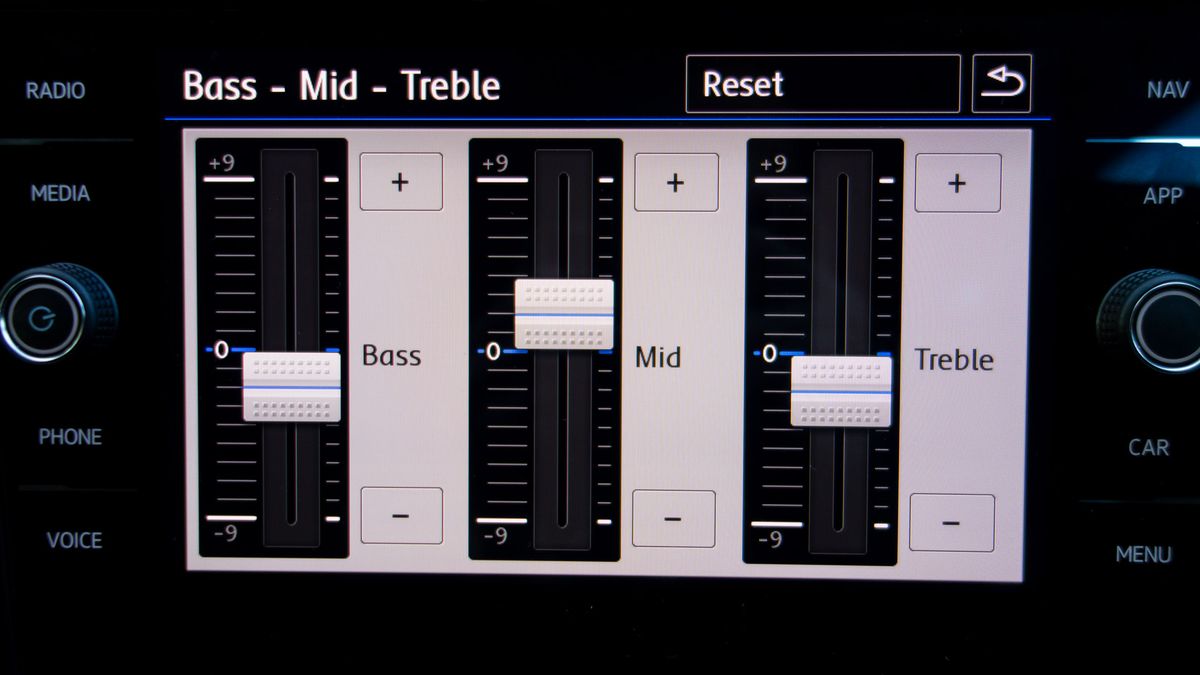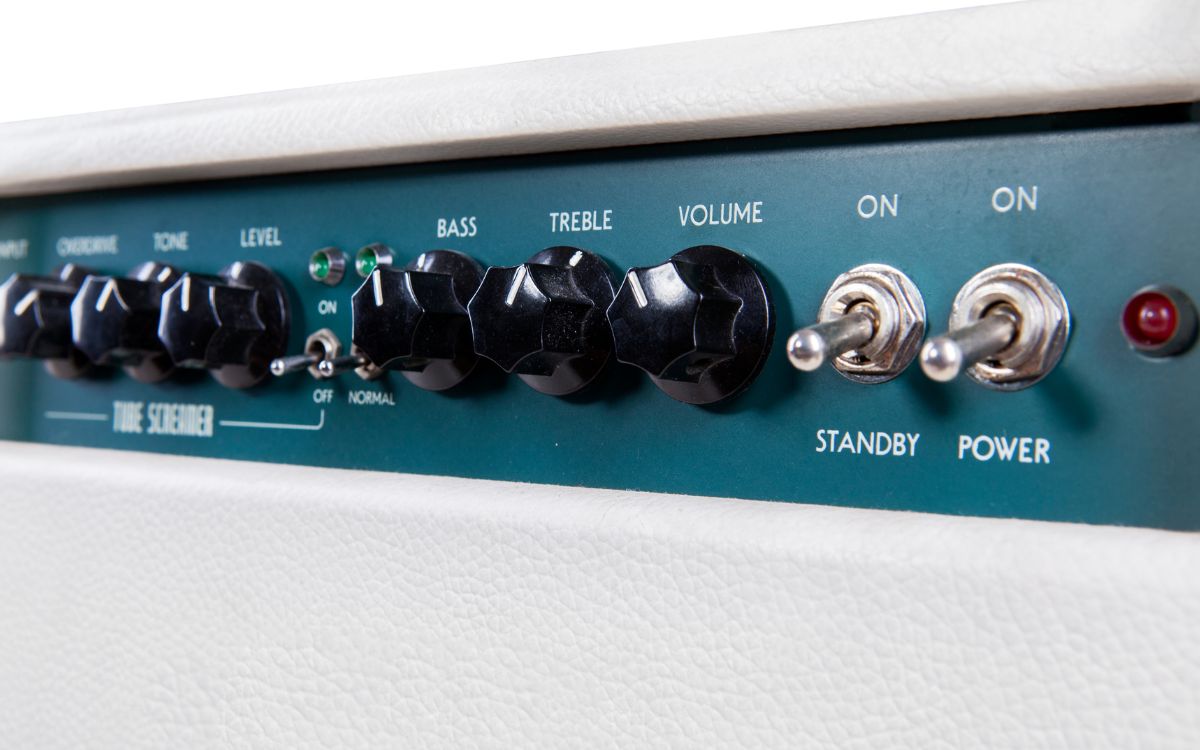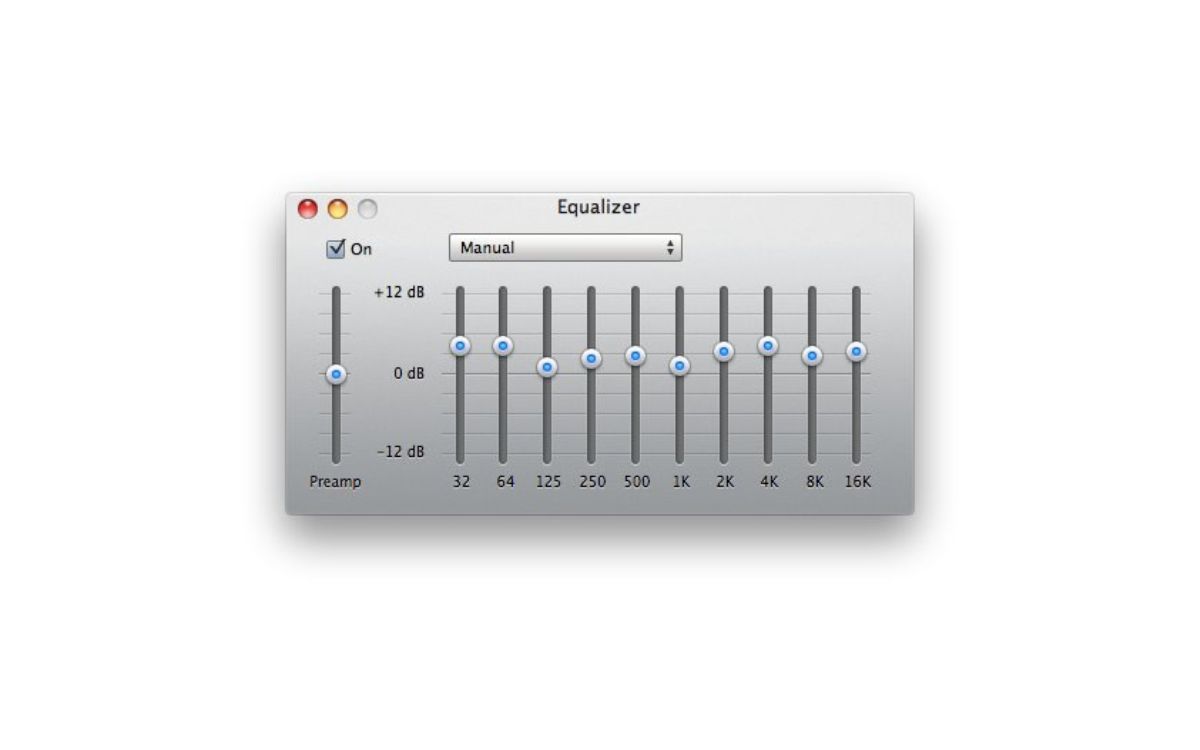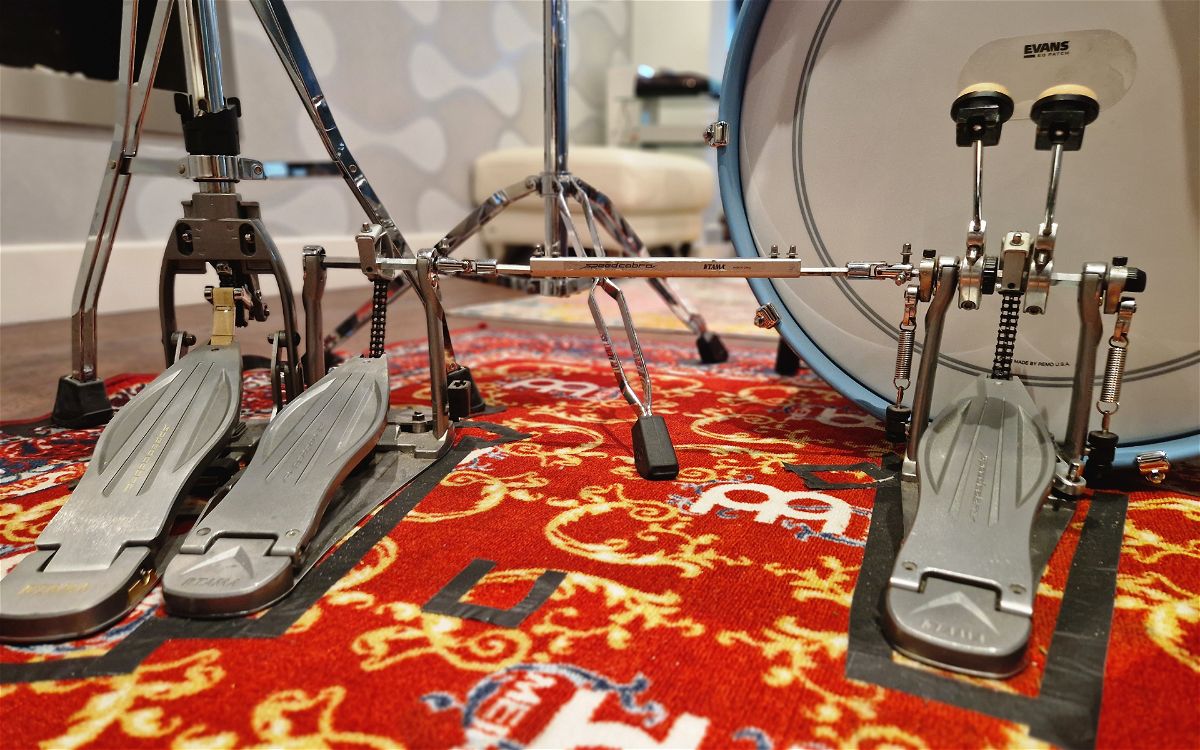Home>Instruments>Bass>How To Set Bass And Treble


Bass
How To Set Bass And Treble
Published: November 29, 2023
Learn how to adjust the bass and treble settings on your device to enhance your audio experience. Improve the quality of your sound with our step-by-step guide.
(Many of the links in this article redirect to a specific reviewed product. Your purchase of these products through affiliate links helps to generate commission for AudioLover.com, at no extra cost. Learn more)
Table of Contents
Introduction
When it comes to audio, the right balance of bass and treble can make a significant difference in the overall quality of the sound. Whether you’re listening to music, watching a movie, or playing a video game, properly adjusting the bass and treble settings can enhance your experience and immerse you in the audio landscape.
Bass refers to the lower frequencies in the sound spectrum, typically associated with deep and rich tones. It adds depth and power to the audio, bringing out the impact of drumbeats, basslines, and low-frequency effects. On the other hand, treble refers to the higher frequencies, including vocals, cymbals, and other high-pitched sounds. It provides clarity and detail, giving presence to instruments and voices.
In this guide, we will explore how to set bass and treble levels to achieve the perfect audio balance. Whether you’re a music enthusiast, a movie lover, or an aspiring audio professional, mastering this skill will greatly enhance your listening experience.
Understanding Bass and Treble
Before we delve into adjusting the bass and treble settings, let’s take a moment to understand these two important components of sound.
Bass, as mentioned earlier, refers to the low frequencies in audio. These frequencies typically range from around 20Hz to 250Hz. Bass provides the foundation of the sound, adding richness, depth, and impact to the audio. It is responsible for the rumbling basslines in music, the thumping explosions in movies, and the immersive low-frequency effects in video games.
Treble, on the other hand, encompasses the higher frequencies in the sound spectrum. It ranges from around 2kHz to 20kHz. Treble adds clarity, detail, and presence to the audio. It brings out the shimmering of cymbals in music, the crispness of dialogue in movies, and the sharpness of gunfire in video games.
Understanding the role of bass and treble is crucial as it helps you identify what to listen for when making adjustments to the audio settings. It enables you to find the optimal balance that suits your preferences and maximizes your enjoyment of the sound.
It’s also worth noting that different genres of music, as well as various types of media, may require different levels of bass and treble. For instance, a bass-heavy track in electronic music may require a stronger emphasis on bass, while a dialogue-heavy movie may benefit from a boost in treble to ensure clear speech intelligibility.
Now that we have a better understanding of bass and treble, let’s explore how to adjust these settings to achieve the desired audio balance.
Adjusting Bass Settings
Adjusting the bass settings allows you to control the depth and impact of the low-frequency sounds in your audio. Here are some steps to help you achieve the desired bass levels:
- Start with a neutral setting: Begin by setting all your audio settings, including the bass, to their default or neutral positions. This will give you a baseline to work with.
- Listen to different genres: Play various genres of music that you enjoy and pay attention to the bass response. Listen for any boomy or overwhelming bass notes, or conversely, a lack of depth and power. This will help you determine if any adjustments are needed.
- Gradually adjust the bass: Make small adjustments to the bass settings, either by increasing or decreasing the level. Listen to the audio after each adjustment and pay attention to how it affects the overall sound. Aim for a balanced bass that enhances the audio without overpowering other elements.
- Consider room acoustics: Keep in mind that the acoustics of your listening environment can also impact the perception of bass. If you’re in a small room with lots of hard surfaces, bass frequencies may appear stronger. Experiment with different bass settings to find the optimal balance for your specific environment.
- Consult user manuals or online resources: If you’re uncertain about the bass settings on your audio device or system, consult the user manual or search for online resources specific to your equipment. Manufacturers often provide recommended settings or guidelines to help you achieve the best audio experience.
Remember, finding the perfect bass setting is subjective and may vary depending on personal preference, listening equipment, and the type of audio content. The goal is to achieve a bass level that enhances the overall audio experience and complements the other frequencies in the sound spectrum.
Adjusting Treble Settings
The treble settings allow you to fine-tune the clarity and detail of high-frequency sounds in your audio. Here are some steps to help you adjust the treble settings:
- Begin with a neutral setting: Set your audio settings, including the treble, to their default or neutral positions. This will serve as a starting point for adjustments.
- Listen to different types of audio: Play a variety of audio content, such as music from different genres, movies, or video games, and pay attention to the clarity of the high-frequency sounds. Note if the vocals are crisp, if the instruments have enough presence, or if there is excessive harshness in the treble range.
- Make gradual changes: Adjust the treble settings in small increments, either by increasing or decreasing the level. Listen to the audio after each adjustment and assess how it affects the overall sound. Aim for a balanced treble that enhances the clarity and detail without causing any harshness or fatigue.
- Consider the content and preferences: Different types of audio content may require different treble settings. For example, music with intricate instrumentals may benefit from a slightly higher treble level, while dialogue-focused content may need a more neutral treble setting. Take into account your personal preferences and the specific characteristics of the audio you’re listening to.
- Experiment with EQ settings: Many audio devices and software come with built-in equalizer (EQ) settings that allow you to adjust specific frequency ranges, including the treble. Experiment with these settings to further customize the treble response to your liking.
- Consider room acoustics: Just like with adjusting bass settings, the acoustics of your listening environment may impact the perceived treble. Softer materials and more absorptive surfaces can reduce treble reflections, while harder surfaces can accentuate high-frequency sounds. Take this into account when adjusting the treble settings.
Remember, finding the ideal treble setting is subjective and dependent on personal preferences, the audio content, and the characteristics of your listening equipment. The goal is to achieve a treble level that brings out the clarity and detail of high-frequency sounds without causing any harshness or distortion.
Finding the Right Balance
Adjusting the bass and treble settings individually is crucial, but finding the right balance between the two is equally important. Here are some steps to help you achieve the perfect audio balance:
- Start with a neutral balance: Set both the bass and treble settings to their default positions or a neutral balance. This ensures that neither frequency range overpowers the other.
- Listen to a variety of audio: Play different types of audio content, including music, movies, and games, that you are familiar with. Pay attention to how the bass and treble interact with each other. Note if the bass overpowers the treble, making it difficult to hear high-frequency details, or if the treble sounds too bright without enough depth from the bass.
- Adjust one frequency at a time: Gradually make small adjustments to either the bass or treble settings while keeping the other one constant. Listen to the audio after each adjustment and assess how it affects the overall balance. Find a balance where both the bass and treble are present without either dominating the sound.
- Consider the content: Different audio content may require different balances. For example, music with heavy bass beats may benefit from a slightly higher bass level, while dialogue-heavy movies may require a more balanced approach. Adapt the balance to suit the specific characteristics of the content you are listening to.
- Trust your ears: There is no single right balance that works for everyone. Trust your own hearing and personal preferences. Experiment with different balance settings until you find the one that sounds best to you.
- Take breaks and re-evaluate: After making adjustments, take breaks and give your ears some rest. Come back later and listen to the audio again to see if the balance still sounds right. Our perception of sound can change over time, so reassessing the balance periodically is important.
Finding the right balance between bass and treble is subjective and can vary depending on personal preferences, listening equipment, and audio content. The goal is to achieve a balance where both frequencies coexist harmoniously, enhancing the overall audio experience and ensuring that no element overpowers the other.
Additional Tips and Considerations
When adjusting the bass and treble settings, there are a few additional tips and considerations to keep in mind:
- Use quality audio equipment: Investing in high-quality speakers or headphones can greatly improve your ability to fine-tune the bass and treble settings. Good audio equipment is designed to reproduce accurate and balanced sound, allowing you to make more precise adjustments.
- Experiment with different listening positions: Changing your listening position within the room can affect how you perceive the bass and treble. Try sitting in different spots to find the sweet spot where the audio balance sounds the best to you.
- Be mindful of volume: The perception of bass and treble can change at different volume levels. Adjusting the volume can alter the balance between the two frequencies. Be sure to listen to the audio at your preferred listening volume when making adjustments.
- Consider using presets: Many audio devices or software come with preset equalizer settings tailored for different music genres or media types. These presets can provide a good starting point for adjusting bass and treble settings and can save you time in finding the right balance.
- Regularly clean and maintain your audio equipment: Dust or debris on speakers or headphones can affect the sound quality and impact your perception of bass and treble. Regularly clean and maintain your audio equipment to ensure optimal performance.
- Keep an open mind: Everyone’s preferences for bass and treble balance can vary. Be open to trying different settings and approaches to find what works best for you. Experimentation is key in discovering your ideal audio experience.
By considering these additional tips and factors, you can fine-tune the bass and treble settings to enhance your listening pleasure and create a more immersive audio experience.
Conclusion
Setting the bass and treble levels in your audio system is a crucial step in achieving the perfect sound experience. By understanding the role of bass and treble and following the steps outlined in this guide, you can fine-tune these settings to suit your preferences and optimize the audio balance.
Remember that finding the right balance requires experimentation and personalization. Take the time to listen to different types of audio content, make subtle adjustments, and trust your own ears. The goal is to achieve a balance where the bass adds depth and impact while the treble provides clarity and detail, creating a harmonious audio experience.
It’s important to consider the content you’re listening to, the acoustics of your listening environment, and the quality of your audio equipment. These factors can influence how you perceive the bass and treble and may require slight modifications to achieve the desired balance.
By incorporating the additional tips and considerations provided in this guide, such as using quality audio equipment, experimenting with different listening positions, and being mindful of volume, you can further enhance your audio experience and ensure the optimal settings for your preferences.
So go ahead, make those adjustments, and immerse yourself in the captivating world of sound. Whether you’re enjoying your favorite music, watching a movie, or engaging in a gaming session, fine-tuning the bass and treble settings will bring your audio experience to new heights.











